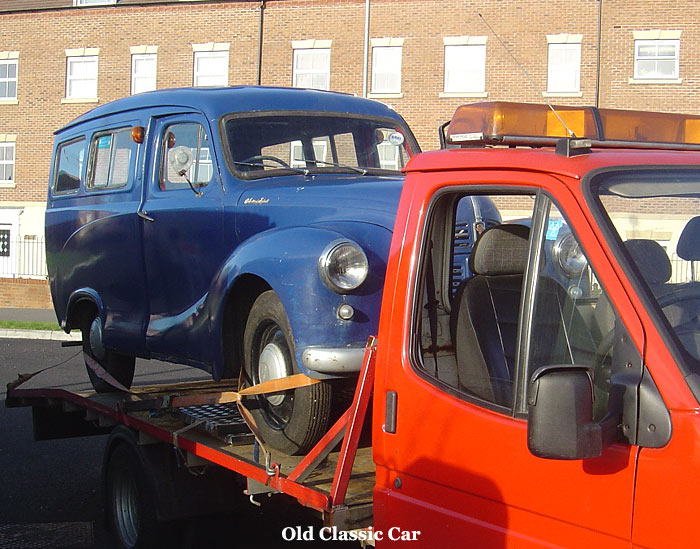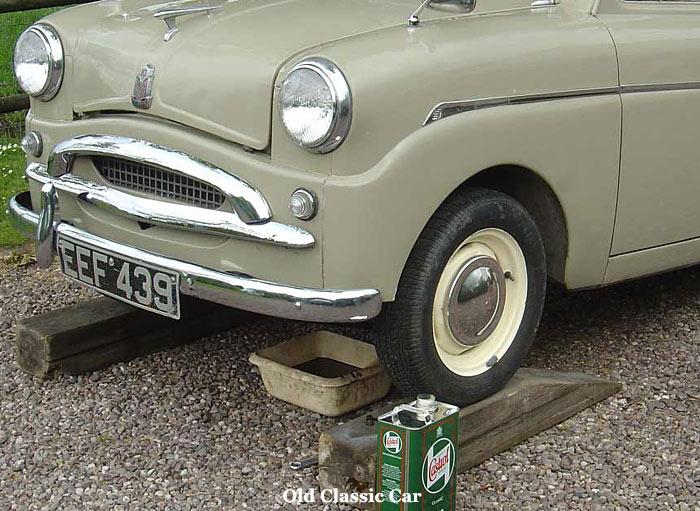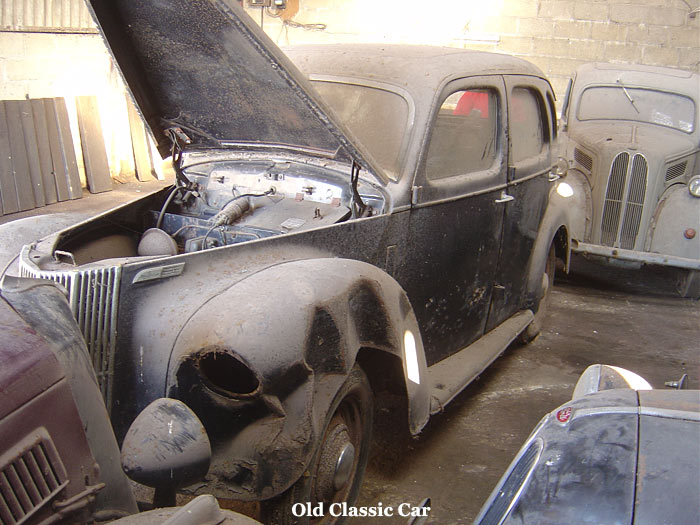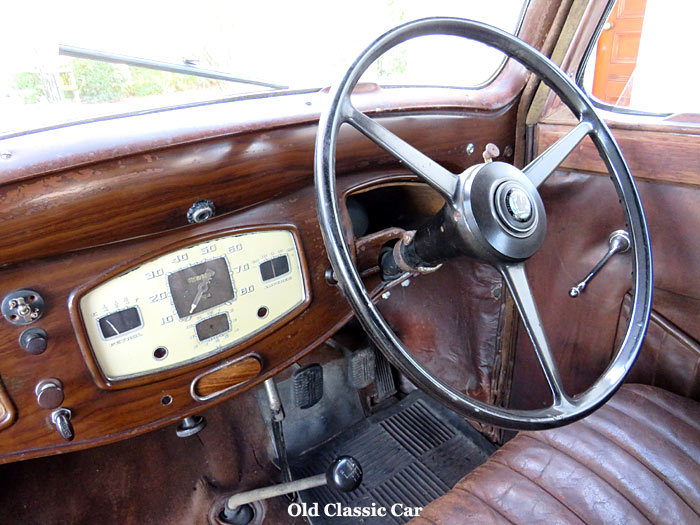Downsides of running a classic car.
Old car ownership can have its negative points too.
There are few classic car owners who, if perfectly honest, would say that everything to do with running a classic is all sweetness and light. Of course it isn't. For me and many
others, the positives easily outweigh the negatives, but it'd be pushing it to say there are no downsides at all, especially if a classic is your daily use car.
|
|
Much of course depends on how you do use your preserved car. If it only comes out occasional weekends on a trundle to the nearest watering hole, for a swift non-alcoholic
beverage of course, then the downsides are less of an issue. The points below relate more to cars that are pressed into regular service.
|
|
The more a car gets used, the more its component parts wear out. Good maintenance can minimise such wear, but there's no denying that piling on the mileage can only
increase the wear on the running gear, coachwork and even the trim. Tyres, brakes, suspension and engine components will all wear to a greater or lesser degree, and this
will bring to light how good the spare parts situation is for your particular motor. Some cars, such as popular MGs and 1960s Austins, have a good spares supply. Owners
Clubs and numerous specialists stock many parts, either new-old-stock or remanufactured, to help keep these older cars on the road.
|

|
|
If you run something a little more obscure, then finding parts can be a trial. Patience and leg work at autojumbles can often turn up parts for more unusual cars, but it takes time. If you plan to use a more unusual car regularly, you'll find that it is better to buy in spare parts as and when you find them, rather than waiting for something to break. My Standard 10 gets used regularly, and I always buy in routine servicing parts whenever I see them. Some parts are shared with later Triumph Heralds (it pays to know what other cars share parts from others!), but others, especially steering components, are I believe only found on this model of Standard. A bit of forward planning is all that is required to keep a classic in roadworthy trim. Of course there are always unexpected things that can go wrong, which may cause you to take the car off the road pending repair, but the more planning you can do in advance of mechanical malady, the less annoying breakdowns will be.
|
|
Many classics had question marks over reliability even when they were rolling off the production line (Hillman Imp owners will know what I'm saying), so chances are, similar
reliability issues will still be an issue. Triumph Stag and Dolomite Sprint owners will know about keeping their coolant/antifreeze mixtures well upto the mark, cooling issues
also being the bugbear for many of the forementioned Imps. Mini owners will know about keeping water off the distributor, handily positioned right behind the grille and
regularly soaked in wet weather driving. Spitfire owners will need to keep a close grease (oil) gun to hand for the front trunnions, as will owners of similar Herald-based classics.
|
|
Over the years many owners clubs and marque-specialists will have addressed the common problems encountered with particular cars, so if choosing a classic as a daily
motor, it will pay to do some research into the common failings of a particular vehicle, and find out whether modern advances or products can lessen the impact of original
design failings.
|
|
Classic cars need more maintenance than a modern bean-tin, or else their reliability will suffer. Poor maintenance on a car already prone to mechanical disfunction will
only pour oil on the fire, and make motoring by classic a real pain in the backside. If you haven't already got one, go out and buy a handbook and workshop manual for
your car. Take a look at the service schedules, often every 1000 miles on classics from the 1960s and earlier. You'll need to check oil and water levels on a frequent basis
to keep everything 'just so', and running most classics will quickly introduce you to the delights of the grease gun and the grubby underside of a daily use car. Failure to
keep on top of these things will only store up trouble for the future, so a few precautionary maintenance checks on a nice Sunday afternoon may well save you from
grovelling beneath your broken classic on the side of the M4, on a nice rainy rush-hour evening.
|

|
|
At least many classics are a lot simpler under the bonnet than a modern
yawn-mobile, so if something does expire, you have half a chance of being able to fix it. Make sure you have a decent selection of tools in the boot of your car, and don't forget spare bulbs, an inflated (!) spare tyre, jack, insulation tape, a few tie-wraps, and a tin of fuel if your car's gauge is a little dodgy. If this all sounds too much like hard work, make sure you don't leave home without a mobile phone and paid-up membership to a breakdown organisation like the AA.
|
|
A well maintained car should present few reliability problems however, but a well maintained car doesn't just happen by itself. (You can read more prepping older wheels on the Running a Classic car page).
|
|
So maintenance requirements and the failings of the original design of some classics are downsides to be very aware about. But potential negatives of running a classic don't just relate to reliability (or lack of).
|
|
Many older cars are not overly burdened with hare-like pace. If your retro motor is only 20 or so years old, then it'll keep up with modern traffic. But if your interests have drifted
further back in to the mists of time, issues of speed may be a problem. For someone who does a regular motorway commute into a city centre, a little runabout from the 1960s
or earlier may not be the best choice. The problem, at least with many British cars, is their very low gearing. Some cars are revving their wotsits off at 40mph, and are more
suited to a leisurely saunter at a more respectable 30-35mph, keeping the engine revs right down (and mechanical wear to a minimum). If you only drive on genteel back roads
then a smaller classic should be fine, but for a higher speed trip, involving overtaking and mixing it with reps in their BMWs, it'll be no fun at all. Better get something a little
larger. Some family sized cars had more sensible gearing in the 1960s compared to their older relatives, a few with overdrive gearboxes available as an option, and these
will be a better bet if reasonable top speeds are important to your situation.
|
|
Whichever way you look at it, no classic car will offer similar levels of safety when compared to a brand new nanny-mobile. Peer inside the gloomy drabness of your typical
modern box and you'll see airbags sprouting from all corners of the cabin, soft squishy bits with which to impact your head against, and several miles between the front seat
occupants and the windscreen (laminated of course). Settle down into the cabin of a similarly sized classic and you'll be greeted by a characterful dashboard, all hard metal,
spiky switches, rock hard steering wheel, and toughened screen just inches from your nose. Of course there is an argument that all this safety equipment, while obviously
a good idea, can lead to drivers being less careful in their driving, feeling all cocooned and invincible in their cosy tin box.
|

|
|
A certain J. Clarkson on BBCs Top Gear many years ago did
raise the notion that to improve safety on the roads, all steering wheels should be fitted with a large spike pointing out from the steering wheel, ready to impale the driver should
they fail to take a corner. A slight exaggeration, but the idea is that very safe cars can lead to very un-safe driving styles. Anyone piloting a vehicle of advancing years will note
from day one that their environment, while agreeable to the eye (in some cases, lets not get into 70s/80s car styling here..), does not offer all these modern safety aids. Hopefully
this lack of uber-safety may lead to a more careful approach to navigating the highway. Drivers of classics are, as a breed, a more sensible bunch anyway (ask any insurance
company) so accident avoidance is more likely to be on their mind. Distractions are fewer in an old car, leaving more time to look out of the windows at whats going on outside.
Compare this to a modern, 'safe' car, with its gizmo laden consoles, containing all manner of useless distractions such as TV, Sat Nav (buy a map for heavens sake, and read it
before setting off, not while driving along), cup holders, altimeters (in some 4x4s), G-meters (usually reserved for fire-breathing Japanese imports),
and mind-bogglingly complex in car audio systems. So while classic cars have few of the safety features of a modern car, they also have far fewer gadgets to distract a driver, and generally focus the drivers mind on making a safe passage from A to B.
|
|
Which leads me on to the final area that I think may be a negative of older cars, at least in some peoples eyes. That of equipment. Back in the 50s and 60s, drivers were indeed
lucky to have a heater built into their car. For many drivers back then, the idea of a car heater was to put on a second pair of socks, a thick scarf, and a suitably insulating piece of headgear. Ventilation was fairly average on many old cars, although this would be mitigated somewhat by the opening quarterlights that often came as standard, directing a chilly blast onto the inside of the screen and the drivers right knee. Air conditioning was the preserve of the monied set, and only available on the very finest of motoring machines. Interiors could be jolly basic places to be, some peasant-spec motorcars being devoid of passenger sunvisors, carpets, radios, wind-up windows and similar delights. Those who like to see the positives in all things, will tell you that, on a 40 year old car, this is a very good thing as there is less to go wrong. Good point.
|
|
The bottom line is that choosing to drive a classic on a regular basis, requires a certain mindset and enthusiasm to get involved with the workings of a car. If your interest in maintaining a car never stretches beyond running it through a car wash once a year, then maybe a vintage or classic isn't really for you (unless you can afford to pay someone to take care of all the menial tasks such as maintenance).
|
|
But If you're willing to adjust to the way that old cars work, and their needs, then they can be a lot of fun. Put a little time aside to keep on top of
routine maintenance, and allow a little extra time for your journeys (unless you go for a sportingly rapid machine). Expect things to go wrong every now and then,
take some precautions to minimise the impact that such problems cause, and you should get by ok and keep most of your sanity.
|

|








